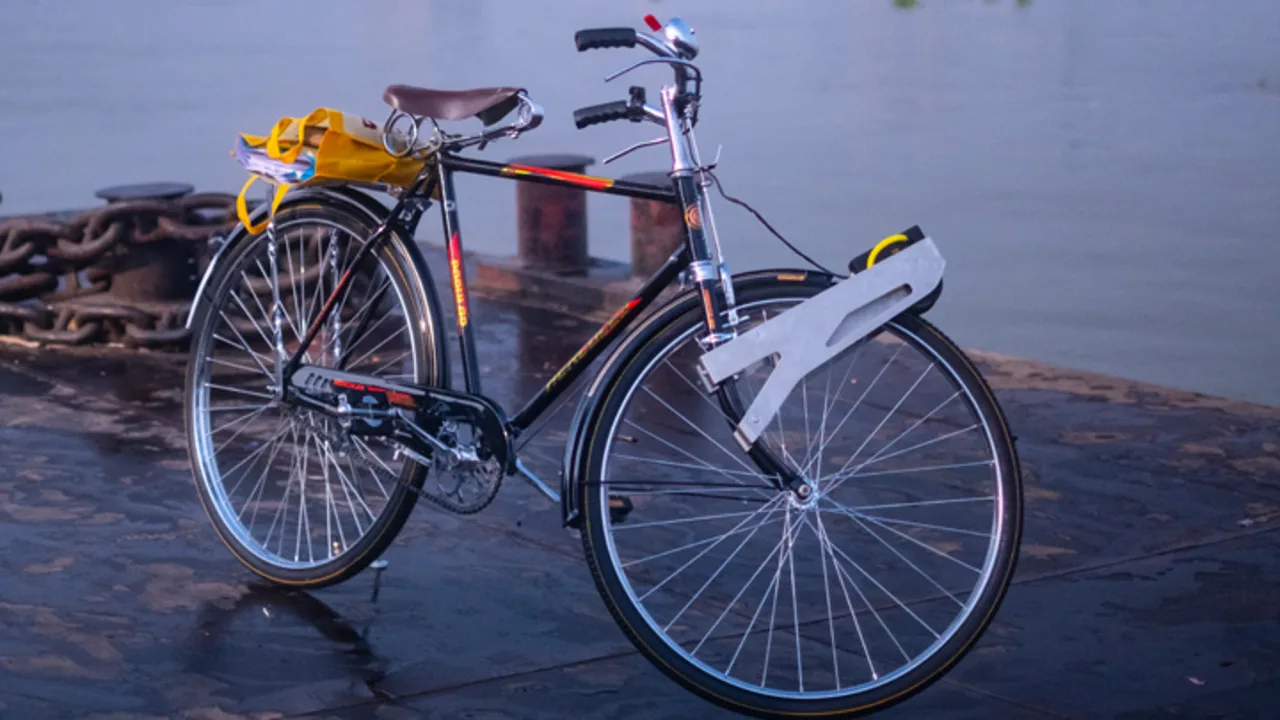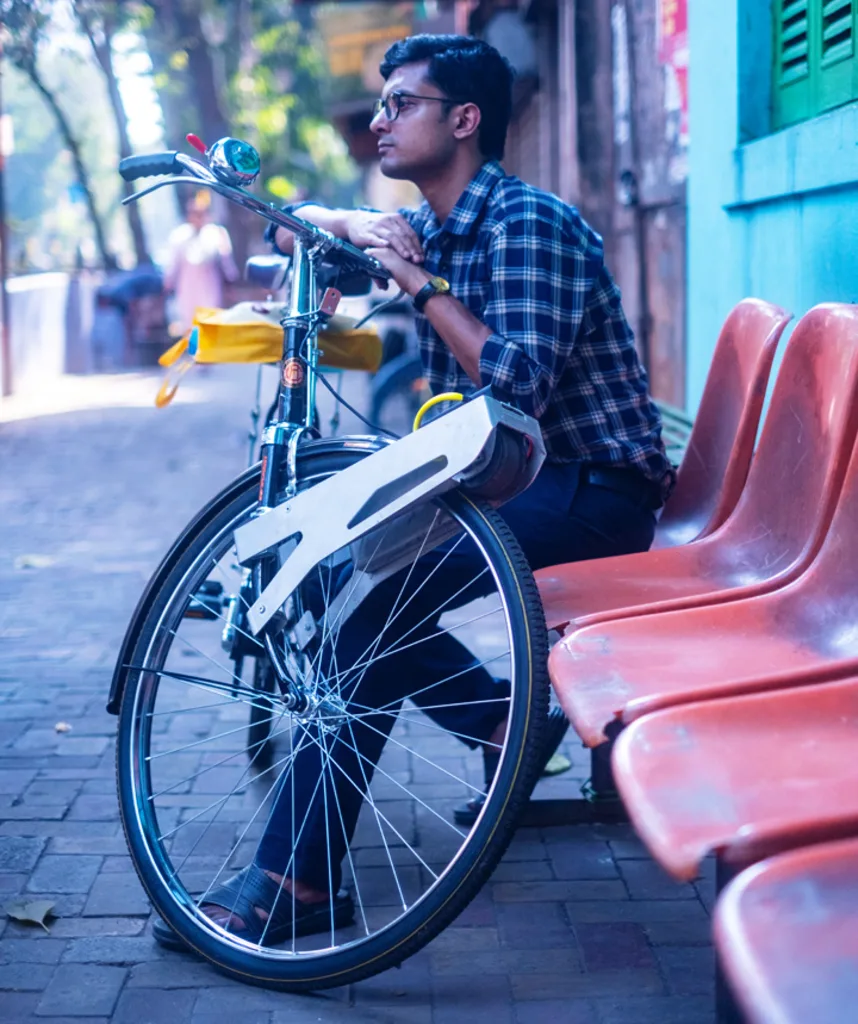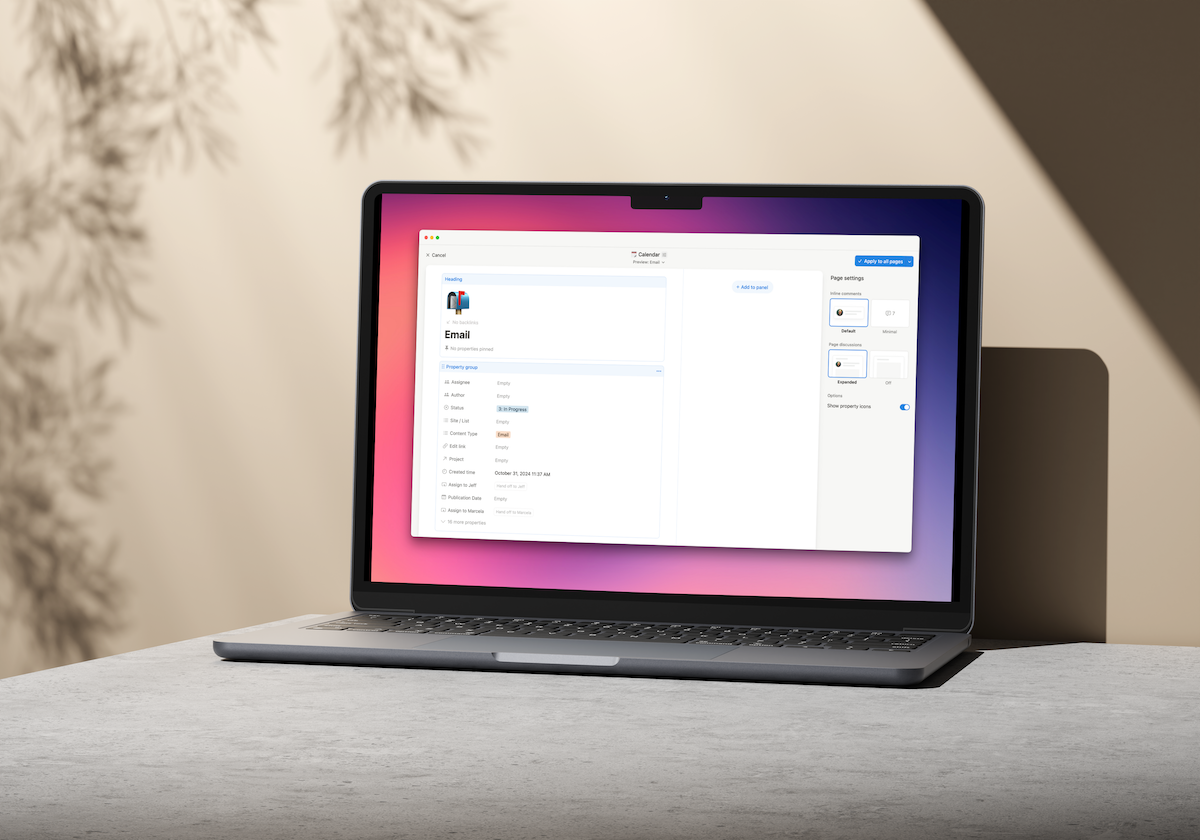This $100 attachment turns any bike into an e-bike
A typical electric bike starts at $1,000—and can top $10,000 or more. Even a cheap, low-quality model might cost $500. But a new attachment is designed to turn any bike into an e-bike for as little as $100. Clip, a Brooklyn-based startup, initially launched a higher-end version of the tech a few years ago, focused on commuters in the U.S. and Europe. Somnath Ray, one of the company’s cofounders, had started riding his bike a couple of miles each day to work, and realized that switching to an e-bike would make him more likely to keep up the habit. But it wasn’t safe to leave an expensive e-bike parked on the street. He also didn’t want to get rid of the bicycle he already owned. “The idea was: What if we could have something we could attach to the bike without any tools, within seconds?” he says. When you get to work, you’d carry the attachment inside. On the weekends, you could leave it off and ride your bike without it. [Photo: Clip] The Clip, with versions that now cost $499 and $599, is cheaper than most electric bikes. But the company wanted to make another option that was even more affordable. The new tech, called the Bolt, is aimed at global markets including India and consumers who otherwise likely couldn’t buy an e-bike. “We want to make it really affordable for people who essentially use the bicycle as a lifeline,” says Ray. Both Clip and Bolt use the same basic architecture: a friction-drive motor that attaches to the front wheel of a bike, with a roller that pushes the wheel to help boost your speed up hills or around cars. Pushing a button attached to your handlebars activates the extra power. But while Clip is designed to quickly go on and come off, Bolt stays in place. Only Bolt’s battery gets lifted out so it can be taken inside to charge (the battery charges within 30 minutes, and has a range of around 18 miles, depending on how often you push the button as you ride; if you need to go farther, you can carry an extra battery). In pilots, the company is now testing the system in cities like Bangalore and Kolkata. Consumers pay $100, around 8,000 rupees, which is about a third of the price of a typical e-bike in India. The battery is available via a subscription of $5 a month, so that consumers don’t have to pay for the cost of an expensive battery upfront. The startup will also sell the equipment to rideshare operators in the U.S. and Europe who want to upgrade their bikes, but don’t have the budget to buy a new fleet of electric bikes. (They’ll pay $250 for each system, including the battery.) At a later point, it’s likely to also be available directly to U.S. consumers. Making the attachments, as opposed to complete electric bikes, is also better for the environment, since it takes fewer resources. The company is manufacturing the Bolt in a zero-emissions factory in Kolkata, with local assembly in India, Europe, and the U.S. It will also recycle and recondition batteries. “There are already a billion bikes out in the world,” says Ray. “There’s absolutely no need to replace them all with e-bikes. We can put them all back into circulation at a fairly minimal manufacturing footprint.”

A typical electric bike starts at $1,000—and can top $10,000 or more. Even a cheap, low-quality model might cost $500. But a new attachment is designed to turn any bike into an e-bike for as little as $100.
Clip, a Brooklyn-based startup, initially launched a higher-end version of the tech a few years ago, focused on commuters in the U.S. and Europe. Somnath Ray, one of the company’s cofounders, had started riding his bike a couple of miles each day to work, and realized that switching to an e-bike would make him more likely to keep up the habit. But it wasn’t safe to leave an expensive e-bike parked on the street. He also didn’t want to get rid of the bicycle he already owned.
“The idea was: What if we could have something we could attach to the bike without any tools, within seconds?” he says. When you get to work, you’d carry the attachment inside. On the weekends, you could leave it off and ride your bike without it.

The Clip, with versions that now cost $499 and $599, is cheaper than most electric bikes. But the company wanted to make another option that was even more affordable. The new tech, called the Bolt, is aimed at global markets including India and consumers who otherwise likely couldn’t buy an e-bike.
“We want to make it really affordable for people who essentially use the bicycle as a lifeline,” says Ray.
Both Clip and Bolt use the same basic architecture: a friction-drive motor that attaches to the front wheel of a bike, with a roller that pushes the wheel to help boost your speed up hills or around cars. Pushing a button attached to your handlebars activates the extra power. But while Clip is designed to quickly go on and come off, Bolt stays in place. Only Bolt’s battery gets lifted out so it can be taken inside to charge (the battery charges within 30 minutes, and has a range of around 18 miles, depending on how often you push the button as you ride; if you need to go farther, you can carry an extra battery).
In pilots, the company is now testing the system in cities like Bangalore and Kolkata. Consumers pay $100, around 8,000 rupees, which is about a third of the price of a typical e-bike in India. The battery is available via a subscription of $5 a month, so that consumers don’t have to pay for the cost of an expensive battery upfront.
The startup will also sell the equipment to rideshare operators in the U.S. and Europe who want to upgrade their bikes, but don’t have the budget to buy a new fleet of electric bikes. (They’ll pay $250 for each system, including the battery.) At a later point, it’s likely to also be available directly to U.S. consumers.
Making the attachments, as opposed to complete electric bikes, is also better for the environment, since it takes fewer resources. The company is manufacturing the Bolt in a zero-emissions factory in Kolkata, with local assembly in India, Europe, and the U.S. It will also recycle and recondition batteries. “There are already a billion bikes out in the world,” says Ray. “There’s absolutely no need to replace them all with e-bikes. We can put them all back into circulation at a fairly minimal manufacturing footprint.”




































































































![Building A Digital PR Strategy: 10 Essential Steps for Beginners [With Examples]](https://buzzsumo.com/wp-content/uploads/2023/09/Building-A-Digital-PR-Strategy-10-Essential-Steps-for-Beginners-With-Examples-bblog-masthead.jpg)





![How One Brand Solved the Marketing Attribution Puzzle [Video]](https://contentmarketinginstitute.com/wp-content/uploads/2025/03/marketing-attribution-model-600x338.png?#)
































